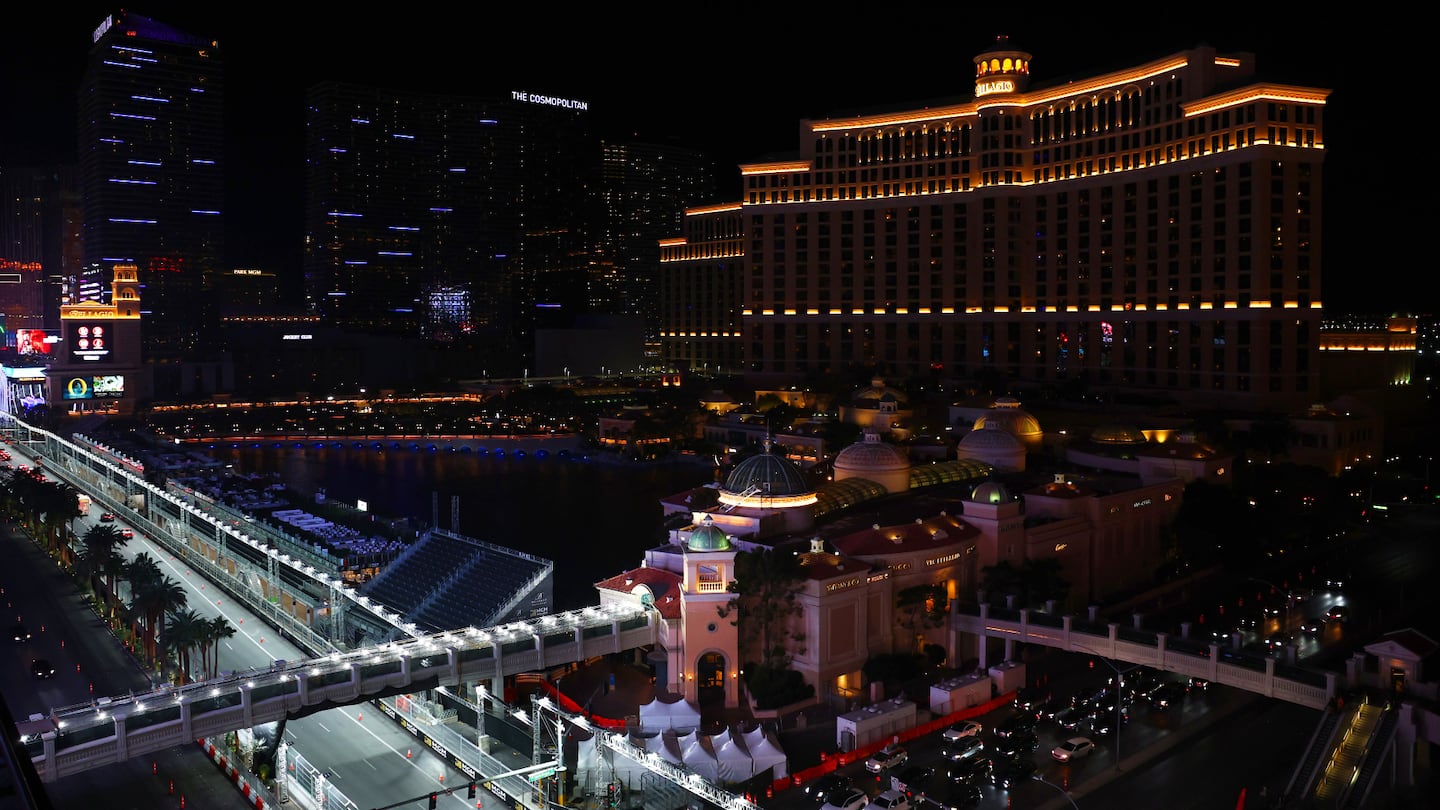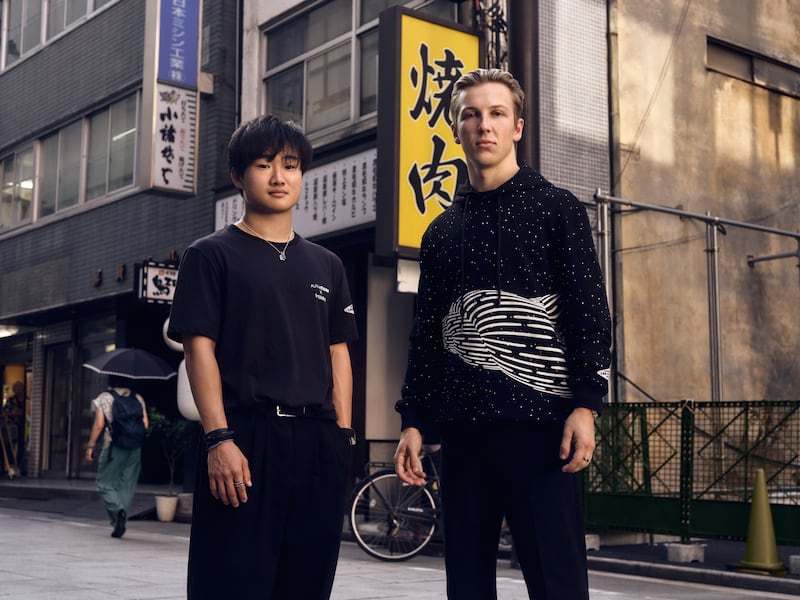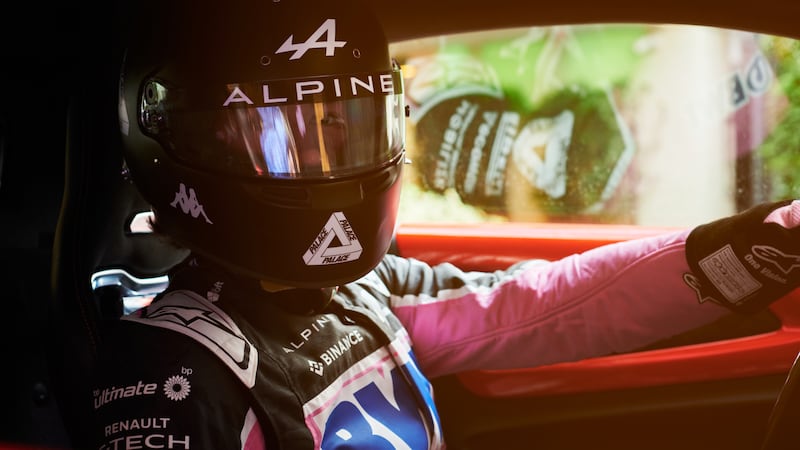
The Business of Fashion
Agenda-setting intelligence, analysis and advice for the global fashion community.

Agenda-setting intelligence, analysis and advice for the global fashion community.

From a sporting perspective, Formula 1′s marquee race in Las Vegas this weekend will have little effect on the outcome of the overall competition. Red Bull Racing’s star Dutch driver Max Verstappen was already crowned as the winner of the 2023 championship back in early October, with six races of the season still to go.
In many ways, the stakes are higher for the dozens of fashion brands on the sidelines, from Tommy Hilfiger and Sacai to Puma and Palace, competing in a race of their own to get a slice of the action amidst a dizzying slew of partnerships, star-studded events and product drops.
The race will be the most anticipated event in the F1 competition since it was announced last year. Formula 1′s new owner, Liberty Media Corporation, reportedly spent $500 million on the transformation of the Las Vegas strip into a racetrack, on which 100,000 fans — including a long list of VIPs like LeBron James and Rihanna — are set to descend each day from Thursday to Saturday, and millions more tuning in on TV across the world. On Wednesday, Bad Bunny, Will.i.am and others took to the stage in a glitzy opening ceremony on the racetrack’s starting grid.
Formula 1 is projecting the spectacle will generate an overall economic impact of $1.3 billion, on par with Super Bowl LVII, which took place in February. Through partnerships with teams and drivers, organised influencer trips and other costly special projects, the fashion industry has played an outsize role in contributing to that figure.
ADVERTISEMENT
For brands, the price of entry was steep, whether they’re operating a pop-up store on the strip or hosting an afterparty and flying in tastemaker guests. Tag Heuer, a partner of the championship-winning Red Bull Racing team, will spend roughly €20,000 ($21,443) per guest to fly out VIP clients and high-profile influencers for the weekend, according to chief marketing officer George Ciz. But if the race stirs up enough buzz, it just might all be worth it.
“Vegas is going to be one of the greatest sporting events in US history,” said Tommy Hilfiger, whose namesake brand sponsors the Mercedes-AMG F1 team. “In years to come it will be bigger than the Super Bowl.”
Hilfiger added that the brand’s long-running association with F1 has allowed it to court an elevated consumer group, and that the brand is witnessing a particular increase in demand from US consumers as the sport grows in North America.
While Formula 1 lags far behind football and basketball both in terms of popularity and commercial partnerships, the sport offers an opportunity to get in front of a new kind of audience. The average F1 fan age is 32, far younger than that of baseball’s MLB (57), American football’s NFL (50), and the NBA (42), per Nielsen and F1 research. Younger fans have flocked to F1 under Liberty Media Corporation’s ownership and its subsequent modernisation of the sport; its female fanbase has also soared.
“F1 has a fan demographic most other sports could only dream of,” said Toni Cowan-Brown, a Formula 1 content creator known for championing the role of women in the sport. “I think there’s a massive untapped market for brands to cater to by creating exciting, wearable merch that is good quality.”

Tommy Hilfiger, the brand, is an official partner of Apple Original Film’s upcoming F1 movie, “Apex”, starring Brad Pitt and Damson Idris and co-produced by seven-time championship winner Lewis Hamilton (a collaboration first teased when filming began at the British Grand Prix in July).
It’s certainly not the only retailer to bet on the sport this weekend.
ADVERTISEMENT

On Monday, British streetwear label Palace and sportswear brand Kappa announced a collaboration with the Alpine F1 team, whose cars will be wrapped in a colourful one-off design and the drivers dressed in bespoke uniforms and helmets carrying each of the brand’s logos, offering valuable product placement throughout the weekend.
Japanese luxury label Sacai, meanwhile, will launch a collaboration with Mercedes-AMG, a capsule collection that includes jackets, T-shirts and jumpsuits, which is set to be sold via Nordstrom and premiered at AMG’s Speed City. Palm Angels is releasing a set of limited edition Las Vegas-themed T-shirts as part of its ongoing partnership with the Haas F1 team; AlphaTauri, the Red Bull-owned fashion line, will release a capsule collection with Californian artist Brendan Monroe; and F1 driver Lewis Hamilton’s +44 label will drop a capsule collection in collaboration with Takashi Murakami celebrating the race. A$AP Rocky will also be in town to launch the first collection of his tenure as Puma’s creative director in the Formula 1 universe.
“The collaboration gives Sacai the potential to exist in a completely new way ... the beginning of an exciting new chapter for both brands and the world of motorsports,” said Sacai founder and creative director Chitose Abe.
This week, F1′s largest collaborator in fashion, Puma, released its first collection designed by A$AP Rocky as the brand’s creative director for the sport. The collection includes streetwear-inspired pieces such as a tattered racing balaclava, denim shorts, a long sleeve T-shirt with removable driving gloves and a distressed baseball cap — a considerable departure from logo-heavy replica team jerseys which make up the bulk of F1′s current merch offering.
Puma signed a landmark multi-year licensing deal to exclusively produce and sell F1 apparel, footwear and merch in May.
The goal of his multiyear partnership with the German sportswear brand is to turbocharge F1′s cultural revival
“I’m just really glad that what was once a really traditional, conservative industry is ready to open up and explore new things, especially when it comes to fashion,” Rocky told BoF last month.
 Opens in new window
Opens in new windowCapitalising on sport’s soaring commercial and cultural relevance is becoming a primary focus for fashion brands. Winning sports-marketing strategies today hinge on building long-term, collaborative partnerships with athletes and organisations that resonate with a brand’s target consumers, as experts in BoF’s latest case study explain.
A new owner, media-friendly strategy and an upcoming Brad Pitt film have helped catapult Formula One into the cultural spotlight. For brands, there are untapped opportunities in the sport – “like a Super Bowl every weekend”.
The acclaimed rapper and frequent fashion collaborator will design a capsule collection to be released at the Las Vegas Grand Prix in November. In future seasons, he will have wider creative control over the brand’s multi-year licensing deal with F1.

Daniel-Yaw Miller is Senior Editorial Associate at The Business of Fashion. He is based in London and covers menswear, streetwear and sport.
Designer brands including Gucci and Anya Hindmarch have been left millions of pounds out of pocket and some customers will not get refunds after the online fashion site collapsed owing more than £210m last month.
Antitrust enforcers said Tapestry’s acquisition of Capri would raise prices on handbags and accessories in the affordable luxury sector, harming consumers.
As a push to maximise sales of its popular Samba model starts to weigh on its desirability, the German sportswear giant is betting on other retro sneaker styles to tap surging demand for the 1980s ‘Terrace’ look. But fashion cycles come and go, cautions Andrea Felsted.
The rental platform saw its stock soar last week after predicting it would hit a key profitability metric this year. A new marketing push and more robust inventory are the key to unlocking elusive growth, CEO Jenn Hyman tells BoF.